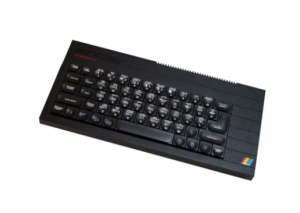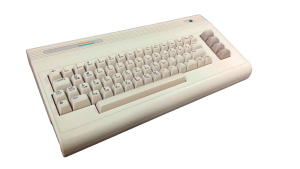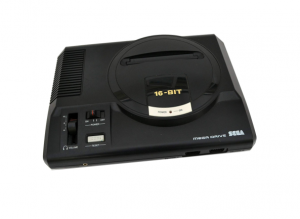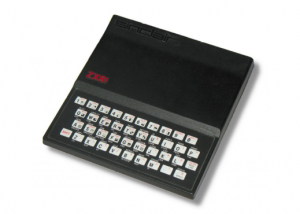Technological Revolution of the 1980s
By the late 1970s, Apple had become a visible player in the personal computer market thanks to the Apple II series. Founders Steve Jobs and Steve Wozniak had proven that a home computer could be commercially successful. But by the early 1980s, most computers were still designed for engineers, hobbyists, and businesses—far from user-friendly for the general public. The Macintosh project began with Jef Raskin’s vision of creating an affordable, easy-to-use computer for consumers. Officially launched in 1979, the project soon caught the attention of Steve Jobs, whose influence steered it toward a revolutionary design. Inspired by the graphical user interface and mouse technology he saw at Xerox PARC, Jobs envisioned a consumer computer that would hide its technical complexity behind an intuitive, visual interface. The development process was filled with creativity and compromises. The team wanted a small, elegant, all-in-one machine—something ready to use straight out of the box. By 1983, the prototype was ready, and on January 24, 1984, the Macintosh was officially unveiled.
When Apple unveiled the Macintosh on January 24, 1984, it was not merely presenting a new computer—it was introducing an entirely new idea of how people could interact with technology. The Macintosh was born from Jef Raskin’s vision of an affordable, approachable computer for everyday consumers, but when Steve Jobs became involved, the project took on a more ambitious direction. Jobs saw an opportunity to bring to market a machine with a graphical user interface and a mouse—technologies he had first encountered at Xerox PARC. At the time, such innovations were virtually unknown to the average computer user. The development of the Macintosh was an intense and creative process. The design team sought to create an all-in-one solution: a small, aesthetically pleasing device that could be used straight out of the box. The first model featured an 8 MHz Motorola 68000 processor, 128 KB of RAM, and a 9-inch monochrome display. Storage relied on 3.5-inch floppy disks, a new and durable format compared to the larger and more fragile 5.25-inch floppies common at the time. The machine came bundled with MacPaint and MacWrite, allowing users to start word processing or drawing immediately without purchasing additional software.
Apple’s marketing strategy for the Macintosh was as groundbreaking as the product itself. The “1984” Super Bowl commercial, directed by Ridley Scott, didn’t show the computer at all. Instead, it crafted a powerful image of the Macintosh as a tool to liberate users from a grey, Orwellian world of corporate computing. The target was clear: IBM and its dominance of the business market. The commercial, together with Steve Jobs’s dramatic keynote presentation, set the stage for a new narrative in personal computing. Although the Macintosh was intended for consumers, its high price limited household adoption. Its primary early audience emerged in the creative industries—advertising agencies, publishing houses, and graphic design studios—especially after Apple introduced the LaserWriter printer and PostScript support in 1985. Combined with Aldus PageMaker, these tools sparked the desktop publishing revolution, moving the production of printed materials from expensive, specialized equipment into the hands of smaller businesses. The Macintosh also found a role in education, particularly in the United States and in certain European countries where Apple actively partnered with schools and universities. Internationally, reception varied. In the United States, the Macintosh gained a strong foothold in graphic design, but in Europe it remained a niche product throughout much of the 1980s. Prices were higher due to import duties and taxes, and IBM PC–compatible machines were both cheaper and supported by a wider range of software in many countries. While its European presence grew toward the end of the decade, it never achieved mass-market success there. Exceptions existed in industries like printing and advertising, where the Mac’s display quality and interface proved unmatched.
Competition in the 1980s was tough. The IBM PC and its many clones dominated the corporate market, Commodore Amiga and Atari ST attracted multimedia and gaming enthusiasts, and Apple’s own Lisa was too expensive for broad adoption. Yet the Macintosh stood apart: its graphical interface, mouse control, compact design, sharp monochrome display, and bundled creative applications made it a computer built for people, not just engineers. Though the Macintosh never displaced the IBM PC in the mainstream, its influence was profound. It laid the foundation for the graphical user interface that would later spread worldwide through Windows and other systems. The Macintosh demonstrated that a computer could be more than a technical instrument—it could be a tool for creativity, visual expression, and individuality. Today, the 1980s Macintosh remains a symbol of the moment when computing began to shift from a niche pursuit to a daily tool for a much broader audience.
Apple understood that the Macintosh’s success would depend as much on its image as on its technical specifications. The company hired the ad agency and director Ridley Scott to produce what became one of the world’s most famous commercials: “1984”. Broadcast during the Super Bowl, it drew from George Orwell’s dystopian novel, portraying the Macintosh as a liberator from the grey, conformist world of corporate computing—an implicit jab at IBM. It was a bold move—the ad didn’t show the product at all, but instead sold an idea: freedom and individuality. In his keynote, Jobs personally introduced the Macintosh to the audience, showing a computer controlled by a mouse and graphical icons—something most people had never seen before.
The first Macintosh featured a Motorola 68000 processor running at 8 MHz, 128 KB of RAM, and a 9-inch monochrome display with a 512×342 resolution. Storage was via 3.5-inch floppy disks—modern and durable compared to the larger, flexible 5.25-inch floppies common at the time.
Its operating system was entirely graphical, based on windows, icons, menus, and a pointer controlled by a mouse. Bundled with MacPaint and MacWrite, the Macintosh could perform word processing and graphics work straight out of the box.
In the 1980s, a Macintosh could be used for:
- Word processing (MacWrite, later Microsoft Word for Macintosh)
- Drawing and page layout (MacPaint, later Aldus PageMaker)
- Graphics and font management (especially in desktop publishing)
- Programming (Mac Pascal, later HyperCard and other environments)
- Educational software and learning games
- Early email and network access (via modem, especially in the late ’80s)
Competitors
In the 1980s, the Macintosh’s primary rival was the IBM PC and the growing ecosystem of MS-DOS–based clones. PCs were often cheaper, more powerful, and supported a broader range of software—quickly becoming the corporate standard. The first year’s sales fell short of expectations, but the Macintosh’s position strengthened in the mid-1980s thanks to desktop publishing. Its graphical interface and Apple’s creative brand image appealed strongly to the advertising and publishing industries. While the Mac never overtook the IBM PC in mainstream market share, it built a loyal following and proved that a computer could be more than an engineering tool—it could be a creative instrument. The Apple Macintosh was not just a product but a concept that redefined what a personal computer could look and feel like. Its interface influenced not only later Apple products but also Microsoft Windows and the broader computing world. The 1980s Macintosh remains an icon of the moment when computers stepped off the desks of specialists and into the everyday workflow of creative professionals.
Other competitors included:
- Commodore Amiga – advanced in multimedia and graphics.
- Atari ST – popular in music production thanks to built-in MIDI support.
- Apple Lisa – Apple’s own GUI computer preceding the Mac, but priced too high to succeed.
































